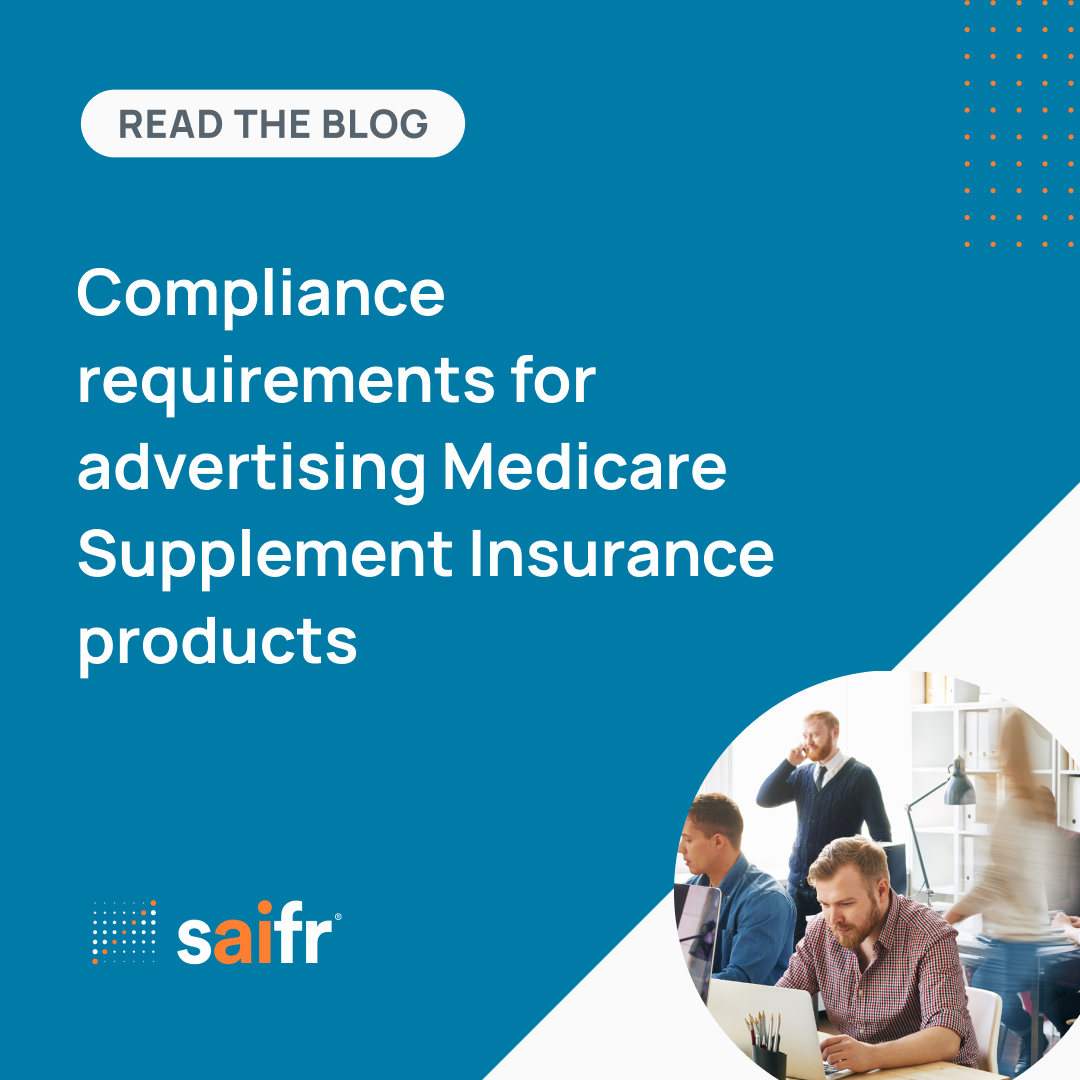In my last blog, I provided a general overview of state regulation of insurance product advertising. With that blog post as background, let’s consider additional regulatory requirements that specifically impact advertising life insurance policies and annuity contracts.
The National Association of Insurance Commissioners (NAIC) Model
As described in the prior post, the NAIC creates and publishes Model regulations on common issues to assist state regulators and encourage more state-by-state uniformity. One of these is Advertisements of Life Insurance and Annuities (MDL-570). [Advertisements Of Life Insurance and Annuities Model Regulation (MDL 570) MO570.]
This Model works with the Unfair Trade Practices Model Act (UTPA – MDL 880 model-law-880.pdf) and provides details on life insurance product-specific advertising.
MDL-570 was last revised in 2015; and as of the end of 2024, 35 states have enacted legislation or regulation covering the areas addressed in the model ST570. (Some states use regulations and other statutes. For our purposes here, we will refer to these as regulations.) As occurs with state regulation, there are differences between and among the states but there are also common themes. Some states have standards that are more specific than the NAIC Model—especially addressing sales to older consumers.
NAIC Model 570 and state regulatory themes
NAIC Model 570 and corresponding state regulations can be divided roughly into three separate types of compliance requirements:
- Definition of Product: What is being advertised and who is doing the advertising.
- Appropriateness of Claims: Does the advertisement make appropriate claims about the product or company—the information must be true, not potentially misleading, and properly documented.
- Prohibited/Required Terms: The advertisement may not include terms that are specifically prohibited and must include items that are required.
Within each of these categories, the goal is truth and clarity when engaging with the consumer. The marketing materials should be targeted to consumers of average education. Something clear to a financial professional may be unclear to a consumer, and thus, considered potentially misleading and noncompliant. Let’s go into detail on each.
Definition of product
This category encompasses requirements that the advertisement include prominent information about the Insurance Company or its products. The focus is to prevent misleading consumers about what the product offers, which could lead to unrealistic expectations and decisions based on incomplete information.
One of the most critical requirement of insurance advertising is that the product being advertised is clearly stated as a life insurance policy or an annuity contract.
- The words “Life Insurance” or “Annuity” must be prominent in the advertisement. While products regularly have marketing names, the advertisement cannot use only that marketing name, unless the name includes the words “Life Insurance” or “Annuity.”
- For example, a term life insurance policy may be sold under the marketing name of “New Family Protection.” The advertisement can use the marketing name if it is augmented by “term life insurance” to read: “New Family Protection Term Life Insurance Policy” in the first section or title of the advertisement. Thereafter in the ad, it can use the marketing name by itself.
- Similarly, an annuity may be sold under the name “Retirement Growth,” but the advertisement must first refer to this as “Retirement Growth Annuity.”
- The advertisement must also clearly include the name and address of the entity issuing the product. If the issuer is part of a larger financial services corporation and is using the logo or brand name of that larger entity, the full name and address of the life insurance company actually issuing the product must be clearly stated in the advertisement.
- Complete and clear information about the life insurance or annuity product is required. Any product piece must include material facts, including which policy elements are guaranteed versus non-guaranteed. If the advertisement is about a specific product, further details about state approvals is also required.
- It is important that advertisements include information about the ‘insurance’ element of a product and not just the investment features. An advertisement for life insurance with a cash value must include meaningful information about the death protection of the product and not solely the investment through cash value growth. This can be challenging, especially for policy types (such as variable universal life) where the investment element may be foremost in the consumers’ minds and may be what distinguishes this product from that of a competitor. Similarly with annuity contracts, the ‘insurance’ element is the ability of an owner to get a lifetime payment stream from the annuity—this is insurance as it transfers the risk of outliving one’s assets from the individual to the insurance company.
- To address possible consumer confusion about life insurance products as investments, insurers are cautioned against using specific investment-type language if that language could have the capacity or tendency to mislead a consumer as to the true nature of what they will receive. This is a subjective standard; as such, erring on the side of caution is often recommended.
- The specified terms include “investment,” “investment plan,” “deposit,” “expansion plan,” “profit,” “profit sharing,” “interest plan,” “savings,” “savings plan,” “private pension plan,” “retirement plan.” In addition, some state regulations have additional trigger words.
- Additional regulatory requirements are triggered based on what is mentioned in an advertisement. For example, an advertisement that references the ability to take a policy loan needs a disclosure addressing the implications of a policy loan. Similarly, an annuity advertisement with language about the ease of withdrawals should include information about costs and taxation of such. These disclosures help the consumer put the ability to take a loan or make a withdrawal in context to the entire policy.
Appropriateness of claims
This category of regulations encompasses the basic requirement that an advertisement be truthful and not misleading or potentially misleading. Here truthful is not a black and white issue—insurance companies are charged with making sure that their advertising statements are not potentially misleading to the public.
The truthfulness requirement results in a need for insurers to review their advertisements for exaggeration or overstatements. For a statement to fail to be truthful, it does not mean that the insurer issuing the advertisement is intentionally lying. Whether something could be misleading is from the eyes of a potential consumer, not an experienced insurance company. Thus, simple statements can be considered problematic: “this policy protects your family” could be misleading since the policy may be of an amount that doesn’t actually provide full protection. Rather, the advertisement could more properly claim: “this policy can help protect your family’s finances.” Similarly, “this policy pays your family when you are gone” could be read as payment when the insured leaves the household; but to be truthful and not misleading, the sentence could clearly state “this policy pays your beneficiary when you have died.”
- To avoid the risk of appearing untruthful, insurers can avoid absolute words and add modifiers to their advertisements. For example, an advertisement that indicates that the policy “will meet” your needs could run afoul of the regulation while a policy that “may need” or “may help meet” your needs is fine.
- In line with using understandable language, the regulations address insurance advertising that promises “no medical exam;” does this merely promise no exam, or does it also mean that medical information is not considered in an application? To clarify this to the consumer, the regulations require that consumers be advised if there are medical questions on the application, that these questions, and perhaps medical records (if the applicant is required to consent to their release), are relevant to underwriting.
- In some cases, an advertisement is required to demonstrate the truthfulness. For example, consider the rules for statistics or ratings. An advertisement that includes the term “according to a recent study” or “experts report” needs a citation identifying the study or expert.
- Regarding ratings, insurance companies periodically undergo financial examinations by a range of independent rating agencies, who then give the company a letter grade, which corresponds with a definition. Different agencies and different scales—an A with one agency may be the highest rating while an A with a different agency can be the third highest.
- The ratings can help consumers understand the financial strength of the insurance company. Since the guarantees for payment of life insurance death benefits or annuity values are based primarily on the financial strength of the insurance company, the ratings are a significant measure for consumers. There is no requirement that the ratings be included in an advertisement; but if ratings are mentioned, the NAIC Model and state regulations require that the following minimum information be provided:
- Name of rating agency
- Rating
- Relative level of the rating with the scale for the agency, such as Aaa rating (3rd best of 11 categories)
- In addition, many insurers also include the narrative description of the rating (such as “strong” or “excellent”) and the date of the last rating.
- The ratings can help consumers understand the financial strength of the insurance company. Since the guarantees for payment of life insurance death benefits or annuity values are based primarily on the financial strength of the insurance company, the ratings are a significant measure for consumers. There is no requirement that the ratings be included in an advertisement; but if ratings are mentioned, the NAIC Model and state regulations require that the following minimum information be provided:
Prohibited/required terms
This category includes specific terms or language that are prohibited or limited under the NAIC Model and state regulations. In some cases, the prohibition comes from a previous event or practice that was shown to be deceptive to consumers. In other situations, the prohibition exists because the specific term caused consumer complaints to the regulators.
Unlike the prior regulatory provisions, some of the words or phrases that are prohibited are accurate—but still cannot be used.
- The NAIC Model and state regulations require that advertisements be readily understandable by an audience of average education or intelligence. That is, advertisements may not use jargon or legal language that may not be clearly understood by the average consumer. An Insurer can address this concern by testing its advertising language for ‘readability’ using a standard such as a Flesch score.
- Advertisements are not permitted to make unfair comparisons or disparage competitors. An example would be comparing one insurer’s 10-year term rates (which are likely to be lower) against a competitor’s 30-year term rates (which are likely to be higher) and only making the difference clear in a footnote. While both rates are true, the presentation is misleading.
- Another example of prohibited terms relates to Guaranteed Issue policies. These life insurance policies have no medical underwriting; they cannot be advertised as being “inexpensive” or “low cost.” While these are marketing words that generally cannot be proven to be true or false, the NAIC Model has specifically outlawed their use for these specific products.
Responsibilities
It is the obligation of the insurer issuing an advertisement to comply with these regulations. In addition, an insurer is also responsible for any advertisement, even one created by a producer or agent, that mentions the insurer’s products.
To comply, insurers review advertisements to ensure compliance with state laws. Some states require insurers to file an Annual Certificate of Advertising Compliance indicating that their advertisements have been reviewed and are in line with state laws.(See, for example, LAH314 - Advertising Annual Certification of Compliance.)
Insurance companies have different ways to ensure adequate review. Most use the traditional method of individually reviewing each separate item. However, new developments in artificial intelligence (AI) are showing promise by providing an initial screening of advertisements to highlight possibly problematic issues and to alert for less commonly seen issues.
Conclusion
Advertising regulations for life insurance companies are designed to ensure that consumers are provided with clear and accurate information. The NAIC Model and state laws provide guidance to help protect the public and establish rules for insurers to follow. The new development of AI tools could aid life insurers in their compliance responsibilities.
The opinions provided are those of the author and not necessarily those of Saifr or its affiliates. This information is general and educational in nature, is for informational purposes only, and should not be construed as legal advice. Saifr and any other third parties are independent entities and not affiliated. Mentioning them does not suggest a recommendation or endorsement by Saifr.
1209673.1.0


-1.png)



